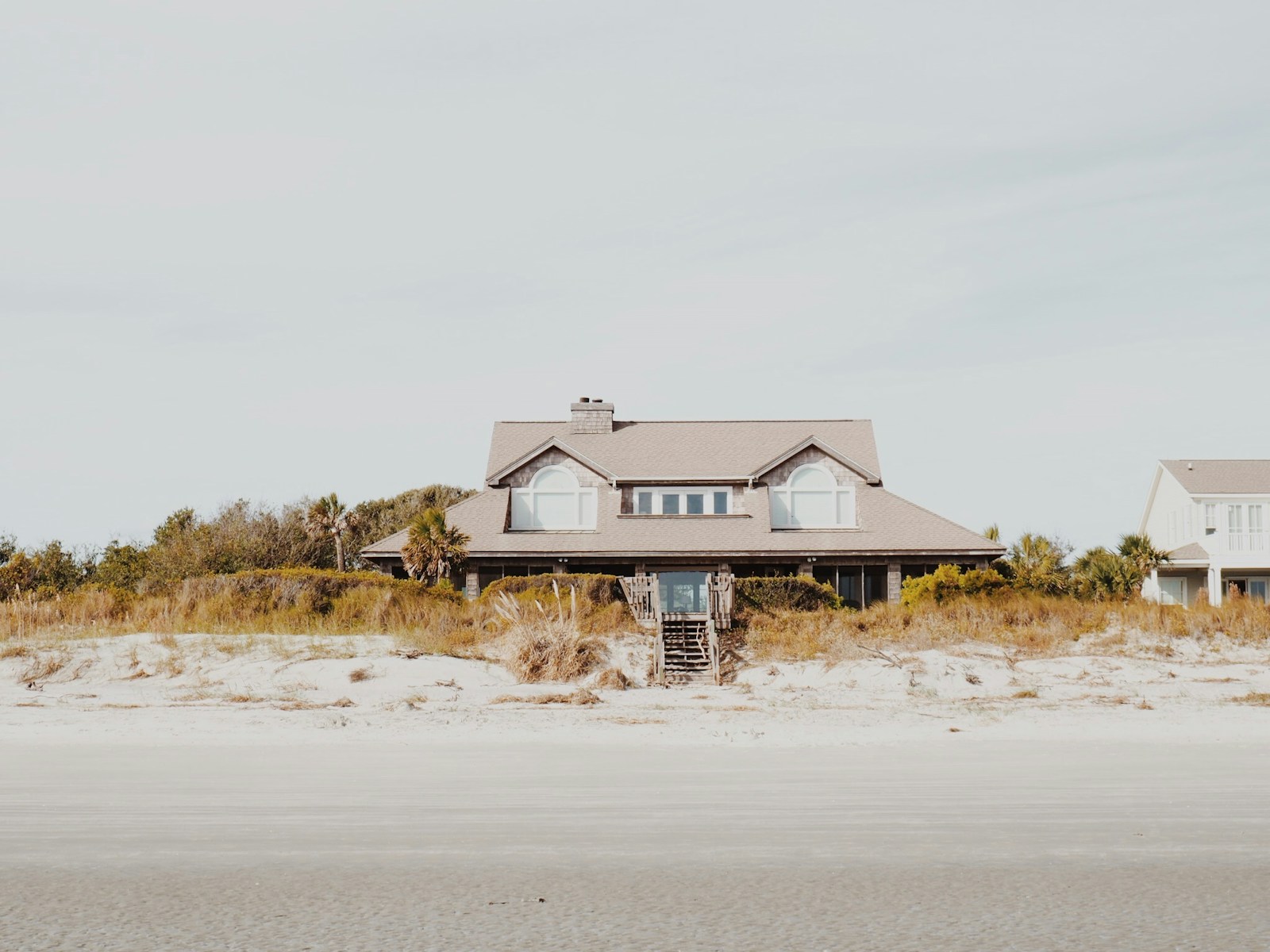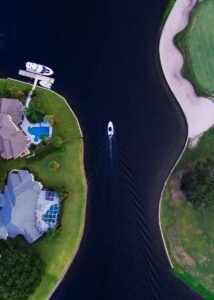TL;DR:
– Coastal homes offer sustainable living through eco-friendly materials and natural light utilization.
– Design trends focus on integrating coastal elements, minimalist aesthetics, and smart technology.
– Challenges involve addressing saltwater corrosion, hurricane-resistant features, and coastal erosion.
– Decorating tips include coastal color palettes, nautical decor, and outdoor plant enhancements.
– Maintenance requires regular inspections for salt damage, protection against sea spray, and proper care of outdoor features.
Explore 5 innovative ideas for ‘Future-Proof Living’ in coastal homes, encompassing sustainability, trendy designs, and upkeep strategies.
Introduction
Picture this: a Coastal Home seamlessly blending with nature, harnessing the gentle ocean breeze and basking in the golden hues of sunrise. As an advocate of innovative living, I am thrilled to explore groundbreaking concepts in futuristic homes that redefine sustainability and comfort. In our quest for future-proof living, coastal dwellings offer a unique canvas for creativity and eco-conscious design. Join me on this journey as we unveil five ingenious ideas that elevate coastal living to new heights, harmonizing modernity with the serenity of the sea. Let’s dive into a world where innovation meets nature, shaping the homes of tomorrow today.
Benefits of Coastal Living Homes
Are you dreaming of a tranquil seaside escape? Coastal homes offer a slice of paradise with their unique advantages. Let’s explore the benefits of coastal living homes and how they contribute to sustainable living.
Sustainable Materials for Eco-Friendly Construction
Coastal homes are increasingly built with sustainable materials that have minimal environmental impact. From reclaimed wood to recycled glass, eco-friendly construction practices help reduce the carbon footprint of these homes while promoting a more sustainable lifestyle.
Utilizing Natural Light and Ventilation
One of the key features of coastal living homes is their emphasis on natural light and ventilation. Large windows and open floor plans allow for abundant sunlight and fresh sea breezes, reducing the need for artificial lighting and air conditioning. This not only lowers energy consumption but also creates a healthy and inviting living environment.
Maximizing Outdoor Living Spaces
Coastal homes are designed to blur the boundaries between indoor and outdoor spaces, making the most of the stunning coastal views and natural surroundings. Outdoor living areas, such as decks, balconies, and patios, provide perfect spots for relaxation and entertainment while connecting residents to the beauty of the coast.
Coastal Home Design Trends
Integration of Coastal Elements in Interior Design
When designing a coastal home, incorporating elements that reflect the seaside environment can create a serene and relaxing atmosphere. Think about using colors inspired by the ocean, such as blues, greens, and sandy neutrals. Add natural materials like driftwood, seagrass, and shells as decorative accents. By blending these coastal elements into your interior design, you can achieve a seamless connection to the beach lifestyle right in your home.
Embracing Minimalist Aesthetics
Incorporating a minimalist aesthetic into your coastal home design can enhance its overall appeal. Opt for clean, simple lines, and decluttered spaces that evoke a sense of openness and tranquility. Choose furniture and decor that are functional yet stylish, ensuring they complement the coastal theme without overwhelming the space. Embracing a minimalist approach allows the natural beauty of the coastal surroundings to take center stage.
Incorporating Smart Home Technology
Integrating smart home technology into your coastal retreat can offer convenience, efficiency, and sustainability. Consider installing energy-efficient appliances, smart thermostats, and automated lighting systems to reduce energy consumption and enhance your home’s functionality. With smart technology, you can control various aspects of your home remotely, ensuring a comfortable and eco-friendly living environment. Embrace the future of coastal living by leveraging the latest innovations in smart home technology.
Challenges of Coastal Home Ownership
Dealing with Saltwater Corrosion
Living in a coastal home brings the challenge of saltwater corrosion, which can damage metal components like door handles, light fixtures, and outdoor furniture. The high salt content in the air accelerates rust and deterioration. To combat this, homeowners can invest in stainless steel or corrosion-resistant materials for their fixtures and furniture. Regular cleaning and maintenance can also help prevent salt buildup and prolong the lifespan of these items.
Implementing Hurricane-Resistant Features
Coastal areas are prone to hurricanes and strong winds, posing a significant threat to homes. Implementing hurricane-resistant features such as impact-resistant windows, reinforced doors, and storm shutters can protect your coastal home from potential damage during severe weather. These features not only increase the safety of the occupants but also provide peace of mind knowing that the home is better equipped to withstand extreme conditions.
Addressing Coastal Erosion Concerns
Coastal erosion is a common issue faced by homeowners living near the shore. Rising sea levels and intense weather patterns can lead to the gradual loss of coastal land. To address this concern, coastal homeowners can explore options like building protective barriers such as seawalls or investing in beach renourishment projects to mitigate erosion. Understanding the impact of coastal erosion and implementing preventive measures can help safeguard the property and preserve the natural beauty of the coastal environment.
Tips for Decorating a Coastal Home
Imagine having a coastal retreat with a beautifully decorated home that reflects the environment’s relaxed and beach-inspired aesthetics. By focusing on key factors like color, decor, and landscaping, you can create a visually appealing and comfortable coastal living space.
Choosing a Coastal Color Palette
Perhaps the first thing that sets the tone in a coastal home is the color palette. Classic coastal design often leans towards colors that mimic the sea surroundings—this includes shades of blue, white, sandy beige, and watery greens. Using these colors not only elevates the ambiance but also naturally soothes the mind, giving you a calming and relaxing atmosphere.
Adding Nautical Decor Accents
To truly capture the essence of the beach within your home, consider integrating nautical elements into your decor. Things like seashells, starfish, nautical maps, or even sailor’s knots can add a touch of authenticity. Don’t go overboard though; keep it subtle and sophisticated for a truly aesthetic appeal.
Enhancing Outdoor Spaces with Coastal Plants
Landscaping with coastal plants not only enlivens your outdoor space but also helps in maintaining the local ecosystem. Choose plants like Sea Oats, Beach Sunflowers, or Yaupon Holly that are adapted to the sandy soil, high salt content, and wind exposure typical of coastal environments. Remember, a sustainable and beautiful coastal home integrates seamlessly into its natural surroundings.
Maintenance and Upkeep of Coastal Homes
Regular Inspections for Salt Damage
Living in a coastal home exposes it to the corrosive effects of saltwater. Regular inspections are crucial to catch any signs of damage early on. Keep an eye out for rusting metal, deteriorating wood, or discoloration on surfaces. Addressing these issues promptly can prevent more extensive damage in the future.
Protecting Windows and Doors from Sea Spray
Sea spray can be particularly damaging to the surfaces of windows and doors in coastal homes. Invest in quality finishes that are designed to withstand the harsh coastal environment. Regular cleaning and maintenance can also help prolong the lifespan of these surfaces and protect your home from the elements.
Proper Maintenance of Outdoor Furniture and Fire Features
Outdoor furniture and fire features are essential elements of coastal living, but they require special care. Choose materials that are resistant to rust and corrosion, such as stainless steel or teak. Regular cleaning and protective coatings can help extend the life of these pieces and keep your outdoor spaces looking pristine.
Transitioning to the conclusion of the article, it’s essential to stay proactive in maintaining your coastal home to ensure its longevity and sustainability. By following these maintenance tips, you can enjoy your coastal retreat for years to come.
Conclusion:
In the dynamic landscape of modern coastal living, embracing innovation is paramount for future-proofing seaside homes. The 5 creative ideas explored in this article reveal a tapestry of sustainability, technology, and aesthetics, redefining the essence of Coastal Home living. By integrating eco-friendly designs, resilient materials, and smart technologies, homeowners can harmonize with nature while enhancing comfort and durability. As the waves of change continue to lap at our shores, let these innovative concepts inspire your journey towards a more sustainable and resilient Coastal Home. Dive deeper into the realm of Coastal Home design to unlock infinite possibilities for a brighter, more connected future.










